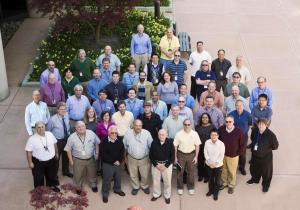Leading-edge ideas and design from Princeton
4 Jun 2013
-
John Greenwald, PPPL
Read more on PPPL website
PPPL scientists, engineers, technicians and other specialists contribute to the international project. © Elle Starkman/ PPPL Office of Communications
The US Department of Energy's (DOE's) Princeton Plasma Physics Laboratory (PPPL) is a key contributor to ITER. PPPL provides hardware, fabrication and R&D for ITER under contract to the US Domestic Agency US ITER, a DOE Office of Science project managed by Oak Ridge National Laboratory. "It is very exciting to work on such a challenging global science project with the potential for so great a global payoff," said PPPL physicist Dave Johnson, who heads the development of diagnostic tools for US ITER.
The PPPL tools will provide essential data during experiments on the donut-shaped, 10-story tall ITER Tokamak. PPPL also is procuring the bulk of the electrical network that will deliver steady-state, or constant, power across the sprawling 445-acre ITER site. PPPL contracts for these and other hardware components of the USD 17 billion-plus machine could total about USD 180 million, some USD 90 million of which will flow to subcontractors.
PPPL is conducting experimental and theoretical research relevant to ITER as well. For example, experiments planned for the National Spherical Torus Experiment (NSTX), PPPL's major fusion facility, could contribute to understanding how plasma will behave and perform in ITER. The NSTX is currently undergoing an upgrade that is doubling the strength of both its electric current and magnetic fields.


